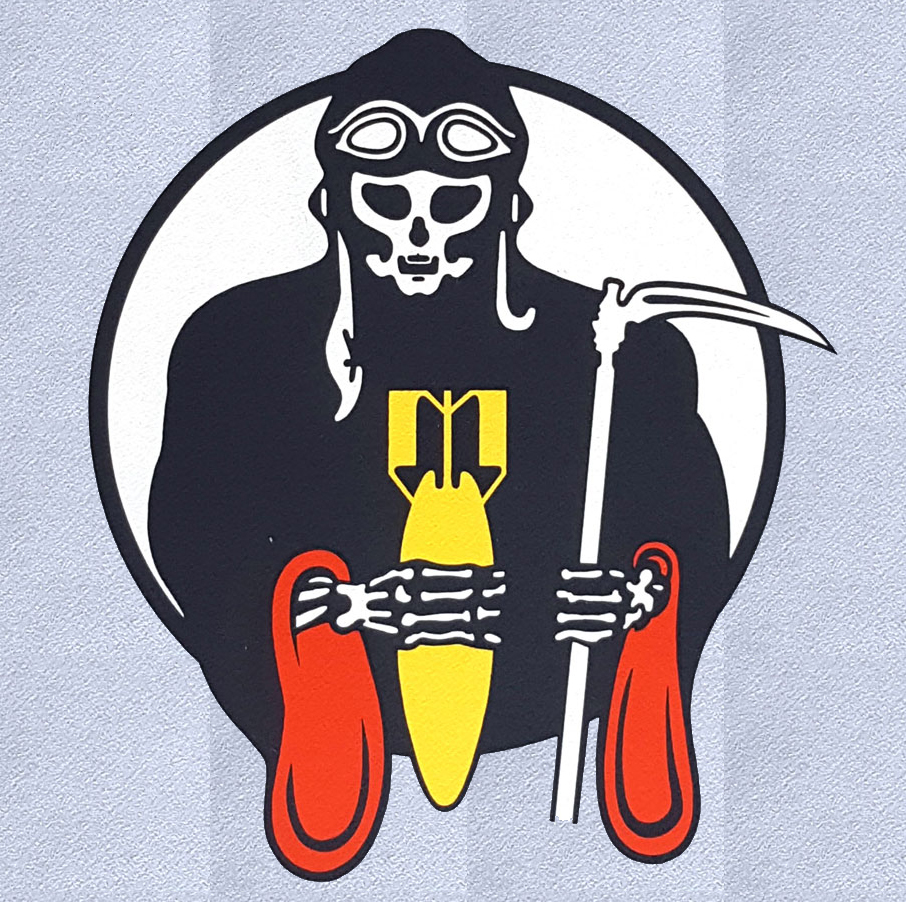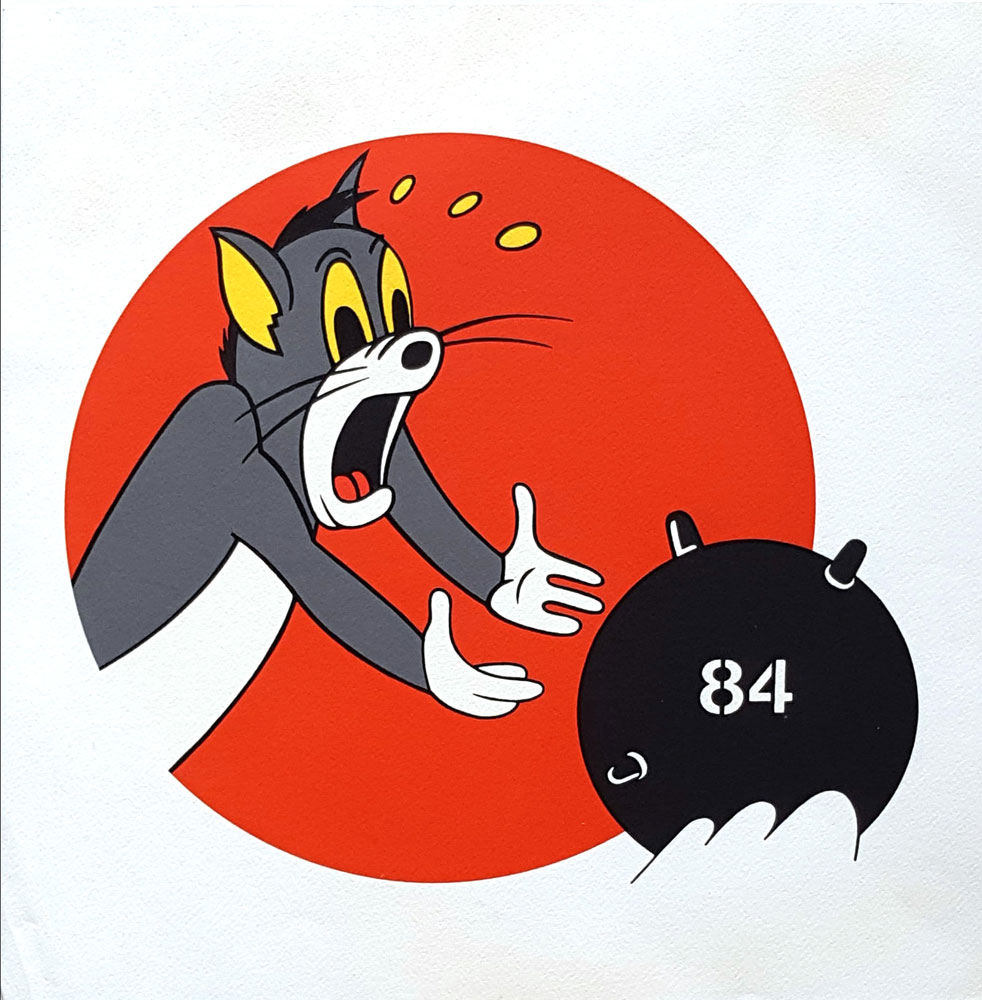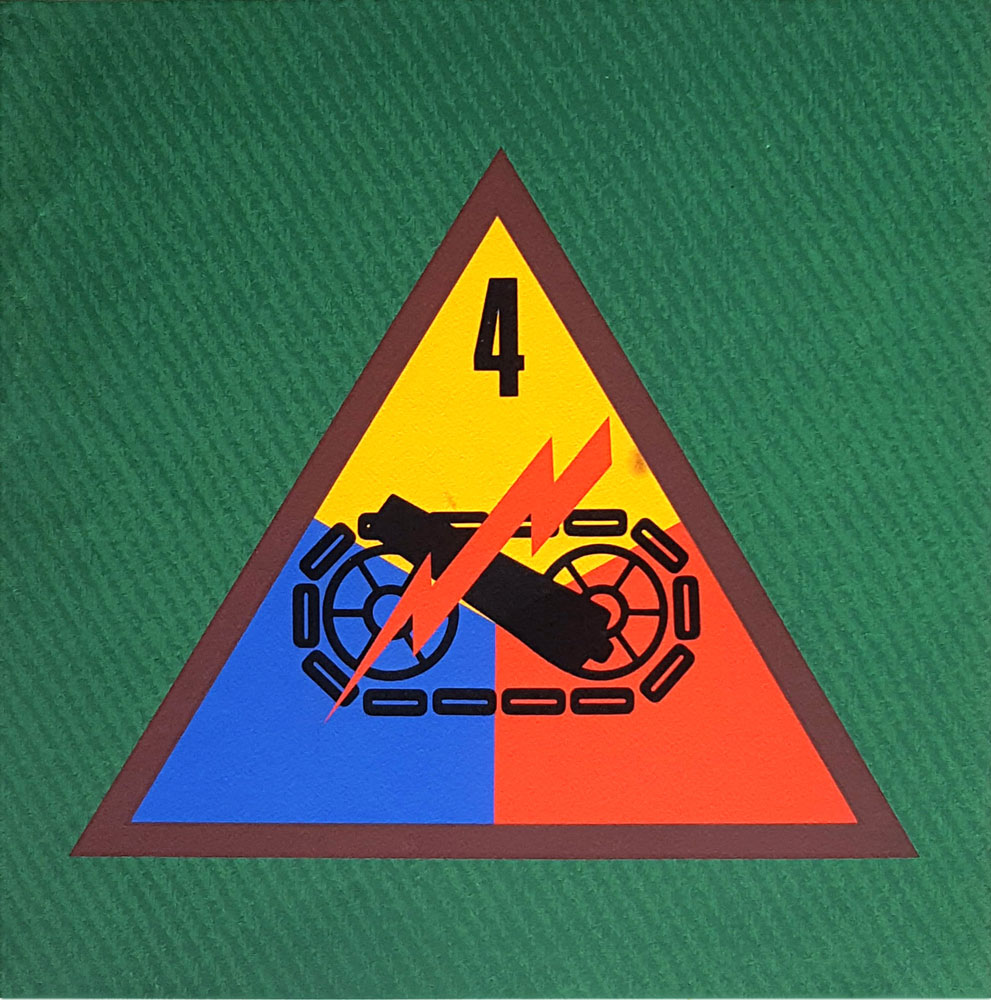#faithfortified – deep rooted belief 01
This figure in its final repose appears serene and confident in certainty of eternal peace in the hereafter.
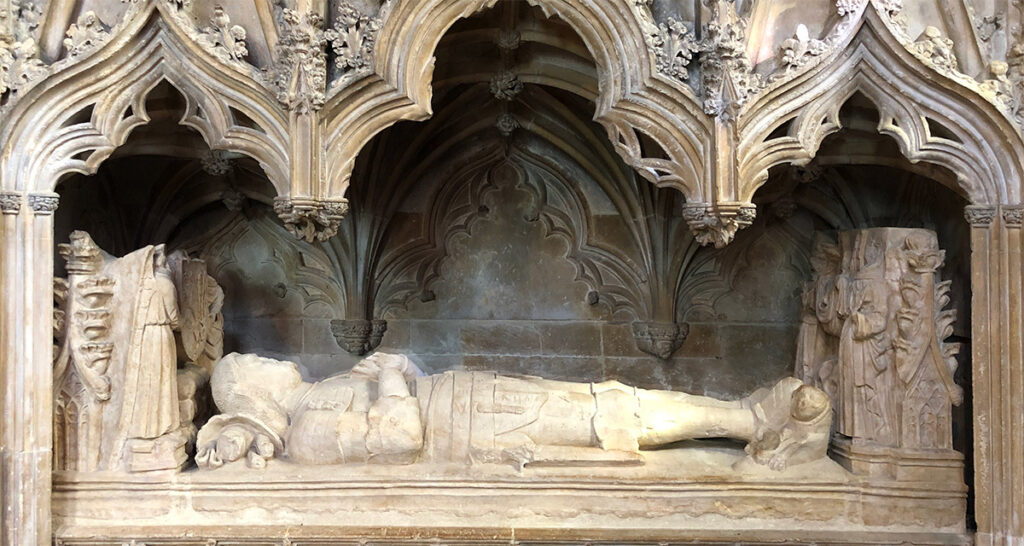
artist printmaker
#faithfortified – deep rooted belief 01
This figure in its final repose appears serene and confident in certainty of eternal peace in the hereafter.

#curatedspaces – broad canvass
It is never easy to pin down what is quintessential to our character, but it is safe to say the English love to garden and in a singular style defined by history, climate and scale. Our garden is small in scale but filled with a wide variety of plants chosen for interest throughout the year.
There is a long tradition of artists being inspired by their gardens and in 2016 the Royal Academy of Arts put on an exhibition entitled Painting the modern garden – Monet to Matisse which was the inspiration behind this series of paintings.
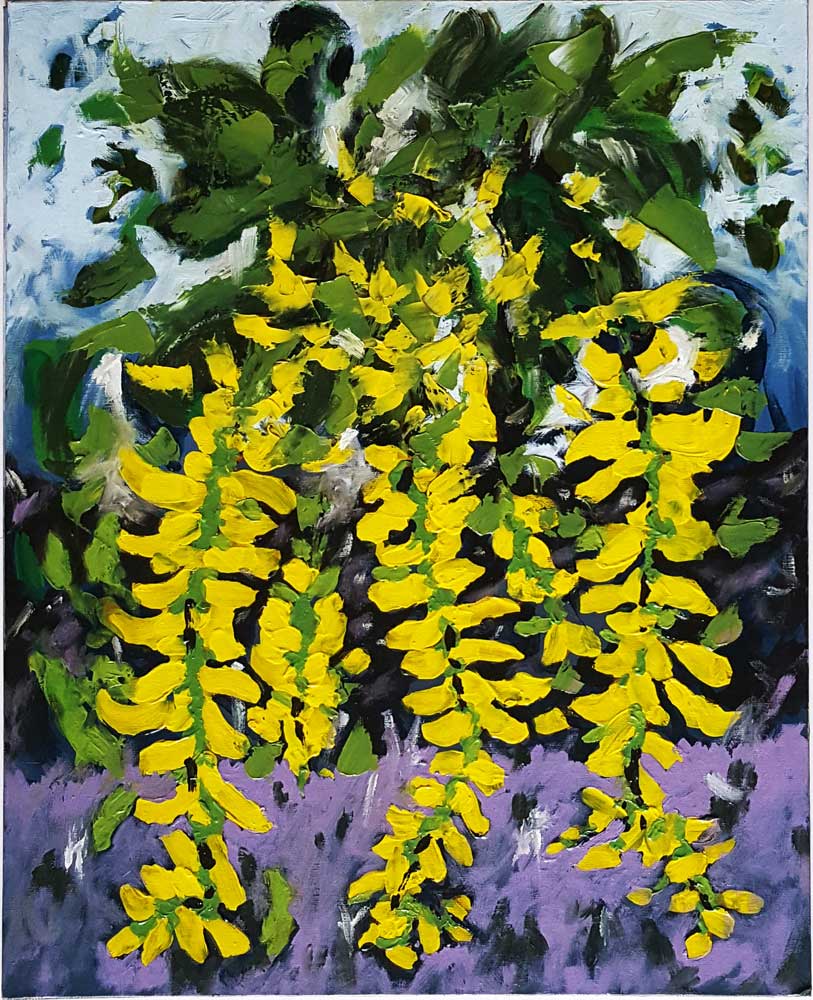
Oil sketch of a laburnum tree cascading over lilac [Cat: 0332, Laburnum, 16 x 20″ / 40 x 50 cm, Oil paint on canvass board, 2015]
#Cul-De-Sac – no way out
There are certain scenes and situations that affect us in strange ways, whether it is a feeling of déjà vu or something comforting, or perhaps we are aware of a strange sensation but are unaware of the reason behind it.
Several years ago, while staying at a run-down pension in Mons – an ancient hilltop town in the south of France, way off the beaten track – I became fascinated by this scene. The pot plant blocks off access to a short flight of stairs that lead only to a disused and locked door, creating a sense of mystery, and the adjacent chair suggests that a guard or custodian has temporarily vacated their station.
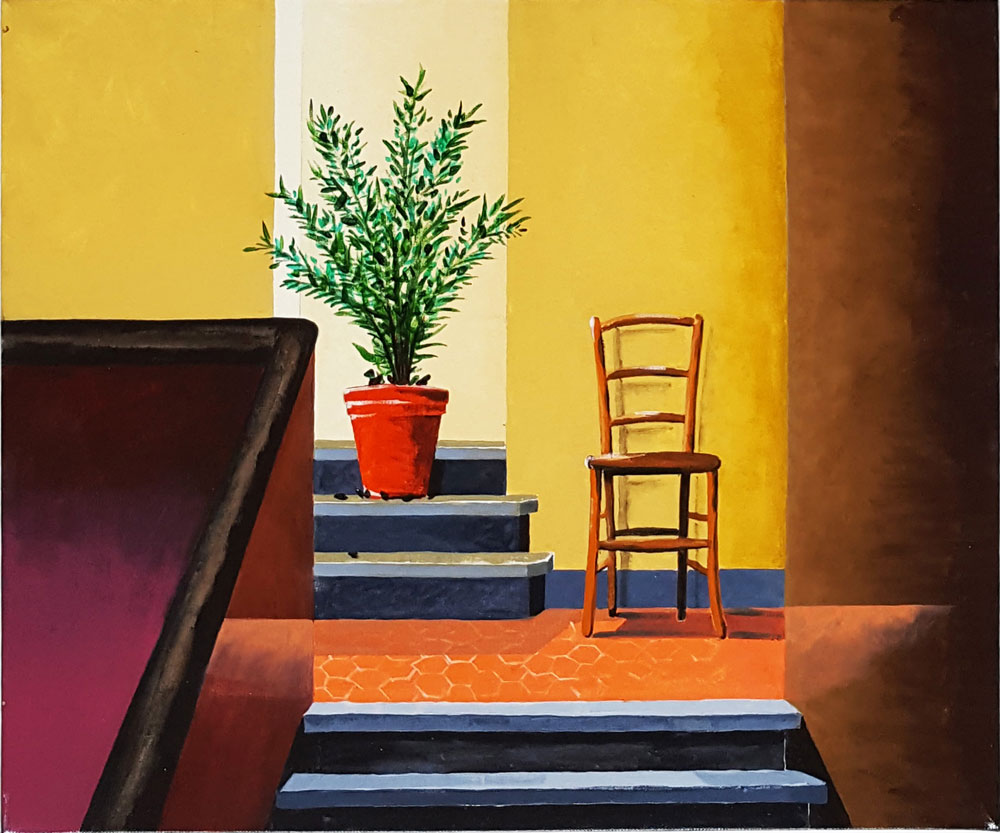
A perfectly placed pot plant and chair [Cat: 0571, Chair at the top of the stairs, 20 x 24″ / 50 x 60 cm, Oil paint on canvas board, 2013]
#sourceofabstraction – the boundary between
Natural Forms is part of a series of works inspired by nature. While they provide life-long sources of interest, these subjects ultimately form the basis of my abstract paintings which are both hard-edged and yet fluid in appearance. Natural Forms focuses on the boundary between flora and fauna, such as a fungus that resembles flesh, or a shell that takes on the appearance of a human ear.
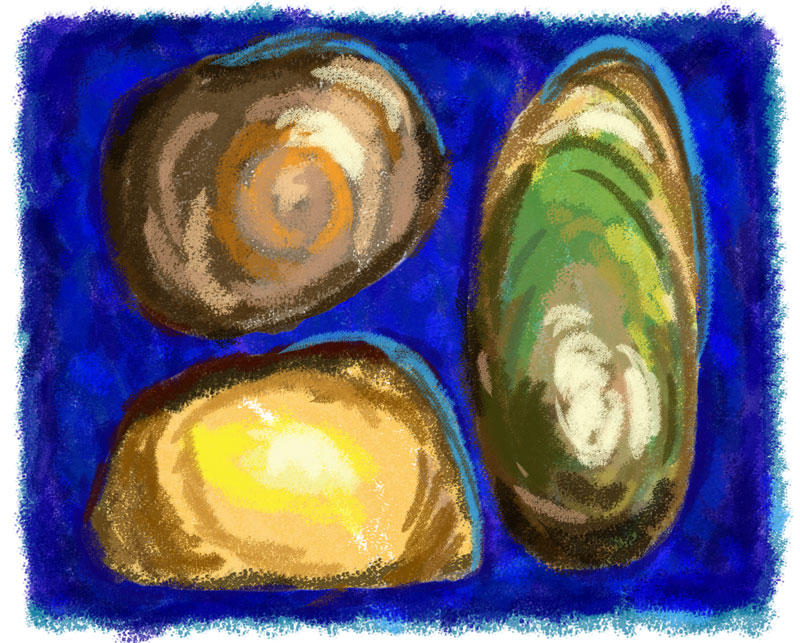
#symbolsofdefiance – sources of strength
People today still paint (or tattoo) their bodies to make them more resilient and stronger, a practice going back in time to the origins of mankind. Most commonly used in situations of confrontation, ‘marks’ made on the body, and later on weapons and shields, gave the wearer additional power and protection.
Similar in a way to ‘Relics and Reliquaries’ and ‘Fingertip power,’ my fascination is in understanding of what these marks, signs and symbols really mean and where their power comes from.
